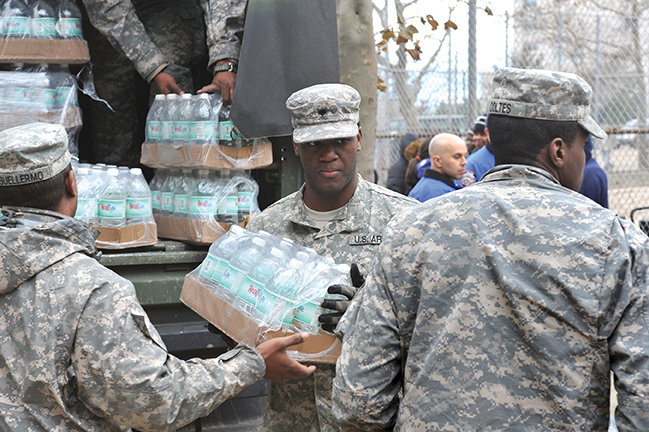BY W. VICTOR GAO
Publisher and Managing Director
The AspenCore Group

Image credit: FashionStock.com/Shutterstock.com.
SHEFFIELD, ENGLAND— As I write this note on a train hurtling toward Paddington Station from Northern England, the world seems to be coming to an end. Hurricanes in America and the Caribbean, an earthquake in Mexico, record typhoons in Asia, flooding in Europe, and mudslides in Africa all remind us how fragile life can suddenly be.
Around the globe, governments, private institutions, and engaged citizens are asking hard questions about what more ought to be done to mitigate natural disasters and the suffering they bring. While every disaster presents its unique logistical and technical challenges, emergency electronics such as text message mapping, mobile ad hoc networks, and real-time satellite imaging often provide life-saving intelligence in the crucial first hours after disaster hits. Then there are the heavy-duty rescue tools, such as the Danish Navy’s Absalon-class amphibious ship delivering 900 cubic meters of cargo and a 40-bed floating hospital or the British Army’s 64.5-ton Titan rough-terrain engineer vehicle powered by the Challenger tank chassis complete with a bulldozer blade and folding bridge. Both vehicles run on a massive electronic and communications hardware apparatus and are networked into a fleet of mobile response units.
Yet, however well-equipped or seasoned each nation’s relief teams are, a myriad of technical problems still challenges rescue efforts today. Not that these problems all require advanced technical expertise — students and faculty members at the University of Washington have shown how developed technologies could be brought together quickly and cheaply to construct a teleoperated robot, drones for damage surveillance, or vests outfitted with sensors and GPS tracking worn by search-and-rescue dogs. Beyond technical knowledge, perhaps what marks engineers best as uniquely effective individuals in any relief effort is their willingness to accept total ownership of a problem, devise a solution that incorporates requirements from others, and then marshal the resources and logistics to deliver the solution. It is not surprising that many professional, as well as academic, engineering communities have set up efforts to respond to the aftermaths of disasters as well as prevent disasters from happening in the first place.
But at AspenCore, we notice that these efforts, by and large, seem confined to individual institutions and lack network scale. There also seems to be a missing global dimension despite the growing cross-border nature of disaster relief challenges. As a global information house serving the engineering community, AspenCore believes that even better relief solutions happen when members of the community are well-informed and well-connected to one another and to hardworking, thoughtful public officials and nonprofit organization leaders.
To that end, in the coming months, AspenCore will be publishing a series of features online and in print profiling some of the engineer-initiated disaster relief programs that we like and recommend to our readers. Our correspondents in the Asia Pacific, Europe, and the Americas will also be interviewing governments and nonprofit groups that have proven their experience and technological skill leadership. We urge you to get involved and send us your list of organizations and individuals that you believe ought to be championed and supported by the rest of the global engineering community. Our editors will vet the list with your help and publish a directory of contacts later in the year.
Not all of us can be at ground zero when disaster strikes, but we can help those who are onsite to rescue more victims and help survivors rebuild their lives. As always, if you have any suggestions or comments, feel free to drop a note at victor@aspencore.com or write to any of your favorite editors at AspenCore. Thank you for your support.
Advertisement
Learn more about Electronic Products Magazine





